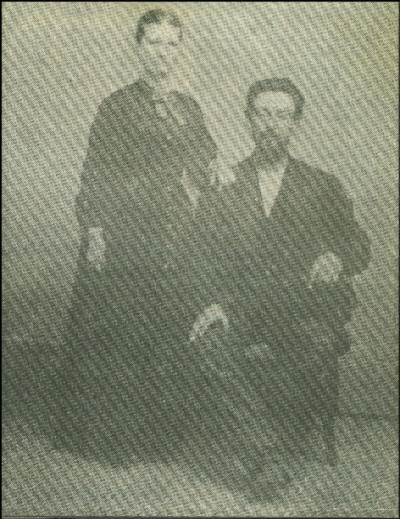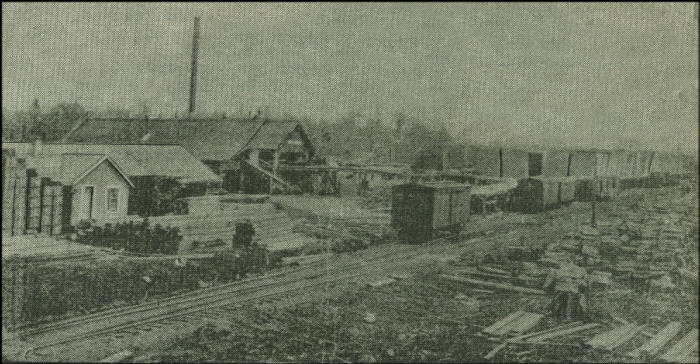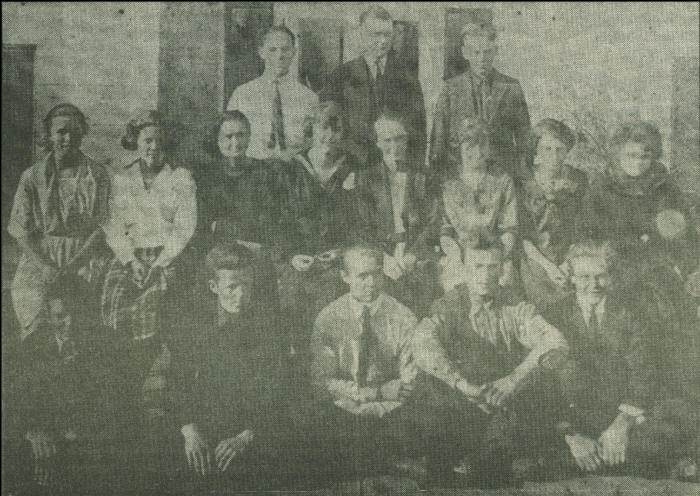|
|
|
Clark County Press, Neillsville, WI May 6, 1993, Page Transcribed by Dolores (Mohr) Kenyon. Index of "Good Old Days" Articles
|
|
|
|
Clark County Press, Neillsville, WI May 6, 1993, Page Transcribed by Dolores (Mohr) Kenyon. Index of "Good Old Days" Articles
|
Good Old Days
A primitive forest area with only some wild animals and an array of the various species of birds, occasionally visited by hunting bands of the Chippewa Indians, was the scene in northwestern Clark County until 1870.
James Seneca Boardman moved from Minnesota, accompanied by his family to Hixon which is now known as Withee. Mr. Boardman ventured west of Withee and started clearing land within the present boundaries of Thorp. His nearest neighbor lived at Longwood and the closest post office was Greenwood, which had two buildings at that time. For a living he made “shaved shingles” which he loaded onto a jumper (a long crudely built sleigh used in summer and winter), hauling them to Black River Falls to exchange for food and supplies. The trip took nine days with a yoke of oxen.
Michael McCaffery began building the first farm house in the present town of Thorp during 1871. He and two other men D. R. Williams and Geo. Richards, worked in logging camps in the winter and cleared their farms in summer. They packed supplies in on their backs and walked to either Greenwood or Chippewa Falls to get their mail.
In 1872, James and Ephriam Boardman built a log house on the site of the present school, which at that time were their homesteads. Once the log house was built, they began clearing the land for their farms.
 |
Mr. and Mrs. Ephraim Boardman, early Thorp pioneers, moved into a log shanty on the southeast quarter of Section 30 in October of 1872.
During the summer of 1873, several new settlers arrived, George and Nelson Courter, William Byatt, S. S. Warner, Zyph Warden and Wm Gerard. The first baby born in that area was Mabel Boardman, daughter of the E. A. Boardmans in 1873.
A log school house was built in 1874. The post office called Winnioka was started in 1874-75 at the farm of B. J. Brown. Mr. Brown was the postmaster and stocked his home with some staple goods which were sold to area settlers. Soon after, E. A. Boardman purchased groceries and provisions to sell from his home, which he hauled 27 miles from Colby.
The county board organized the township of Thorp in 1876 and a town election was held that April 4 at which 29 votes were cast. Taxes were levied; one thousand dollars for roads, twenty-five dollars for the school, three hundred for poor relief and three hundred for incidentals. The following May 13, the board levied additional taxes for bridges and in June divided the town into school districts. Another school was built for the cost of $1,600.00.
The first wedding took place on the 4th of July in the home of E. A. Boardman when Louis Bruno and Nora Warner became wed.
The Wisconsin and Minnesota Railroad (formerly Wisconsin Central) began surveying and constructing a railroad. Much controversy arose over the validity of the bond issue approval because many signatures were obtained on a Sunday. How-ever, railroad construction resumed and planned despite the question of legality.
The summer of 1879, eleven children died when the diphtheria epidemic struck the community, with only one child remaining in school district #1.
In May, 1880, L. O. Garrison came from Centralia, Wisconsin, to build a general store as the labor crews were busily clearing and laying railroad track in the Village of Thorpe.
At that time, there were three family homes in North Fork, which was renamed, Thorpe, by the railroad company. Garrison had a consignment of freight on the first train run that came through the village in November 1880. A box car was sidetracked and used as a telegraph office with J. R. Craig as the first depot until a building was built in 1881.
 |
Nye, Lusk and Hudson’s Mill, Thorp’s first saw mill built in the 1880’s
Charles H. Sheldon and Melvin Nye built a saw mill in 1881, the Forrest Queen Hotel, a saloon, the Boardman House, blacksmith shop, Mosher hardware store and five more houses were built in 1881-1882, as well as the first church (Baptist). The first high school was built for the amount of $5,000.00. J. H. Sargent built the first dance hall. The village was taking off in growth and expansion.
The first newspaper was published in 1883, called “The Pioneer” and started by A. McIntyre. After a few weeks the newspaper was sold to Shafer Brothers and Wm Wagner. The name was changed to ”The Courier” and still carries that name in 1993, as well as still serving its town and community with the area news.
By the year of 1887, Thorp had a population of eight hundred residents and many businesses. It was incorporated as a village in 1893 and this year will be celebrating its’ 100th Birthday with various planned events. Having started as a small hamlet in a heavily wooded area, it is now a thriving city in the center of a progressive agriculture community, evident to the visitors or travelers when they see the neatly kept town and the attractive farmsteads.
A wagon load of wool, pulled by a team of oxen, as it was being hauled from the Friess farm to a market in Thorp during 1912. Two young boys must have had a soft, cushiony ride as they sat on top of that load of wool being allowed to go to town with their dad. (Photo courtesy of Pat (North) Struble of Neillsville).
 |
The Thorp High School Graduation Class of 1923: Back Row (L-R) Tom Deanchamp, deceased, Mr. John E. Kirowski, Principal, Frank Schmidt. Middle row (L-R): Tekla Heideman, Linda Walsdorf, Kathryn Czyzewicz, Eva Kronberg, Elsie Verkuilen, Tracy Zaborowski, Hester Bradshaw, Pearl Aucutt. Front Row (L-R): Elmer Broeren, Waldo Alberts, Leighton Morris, John Kurtinaitis, deceased, Kenneth Lindquist. John Kurtinaitis was Valedictorian and Eva Kronberg was Salutatorian.
|
© Every submission is protected by the Digital Millennium Copyright Act of 1998.
Show your appreciation of this freely provided information by not copying it to any other site without our permission.
Become a Clark County History Buff
|
|
A site created and
maintained by the Clark County History Buffs
Webmasters: Leon Konieczny, Tanya Paschke, Janet & Stan Schwarze, James W. Sternitzky,
|